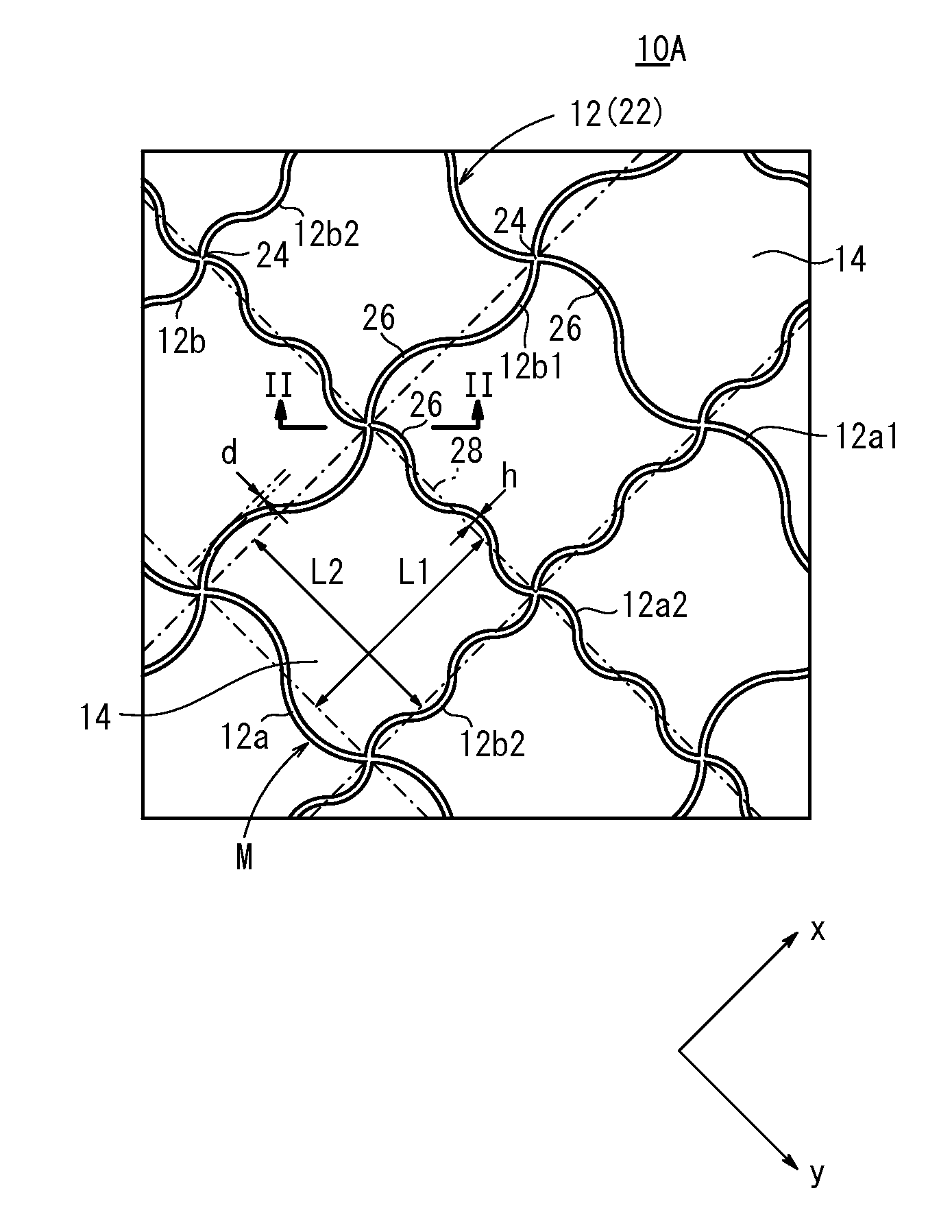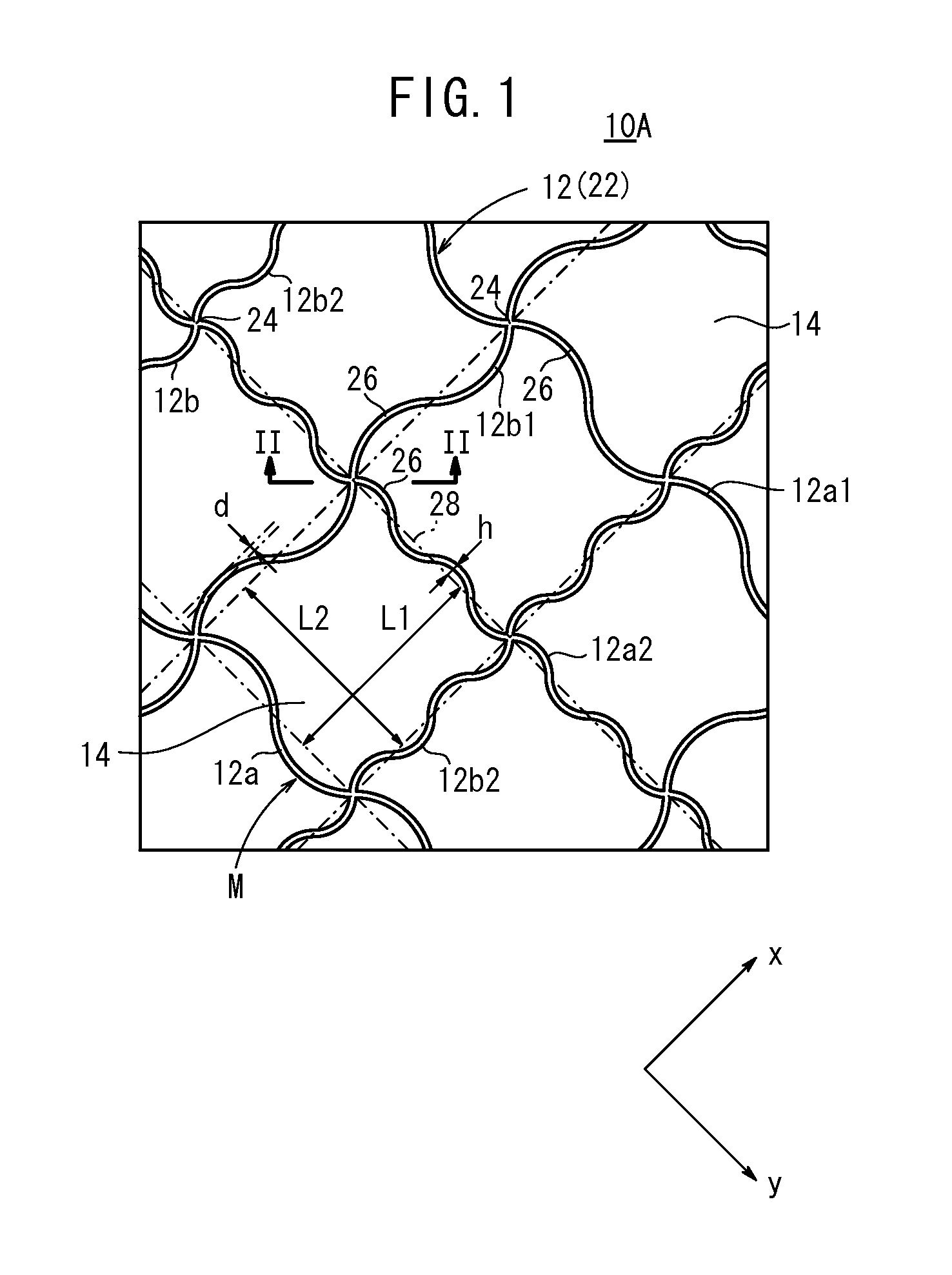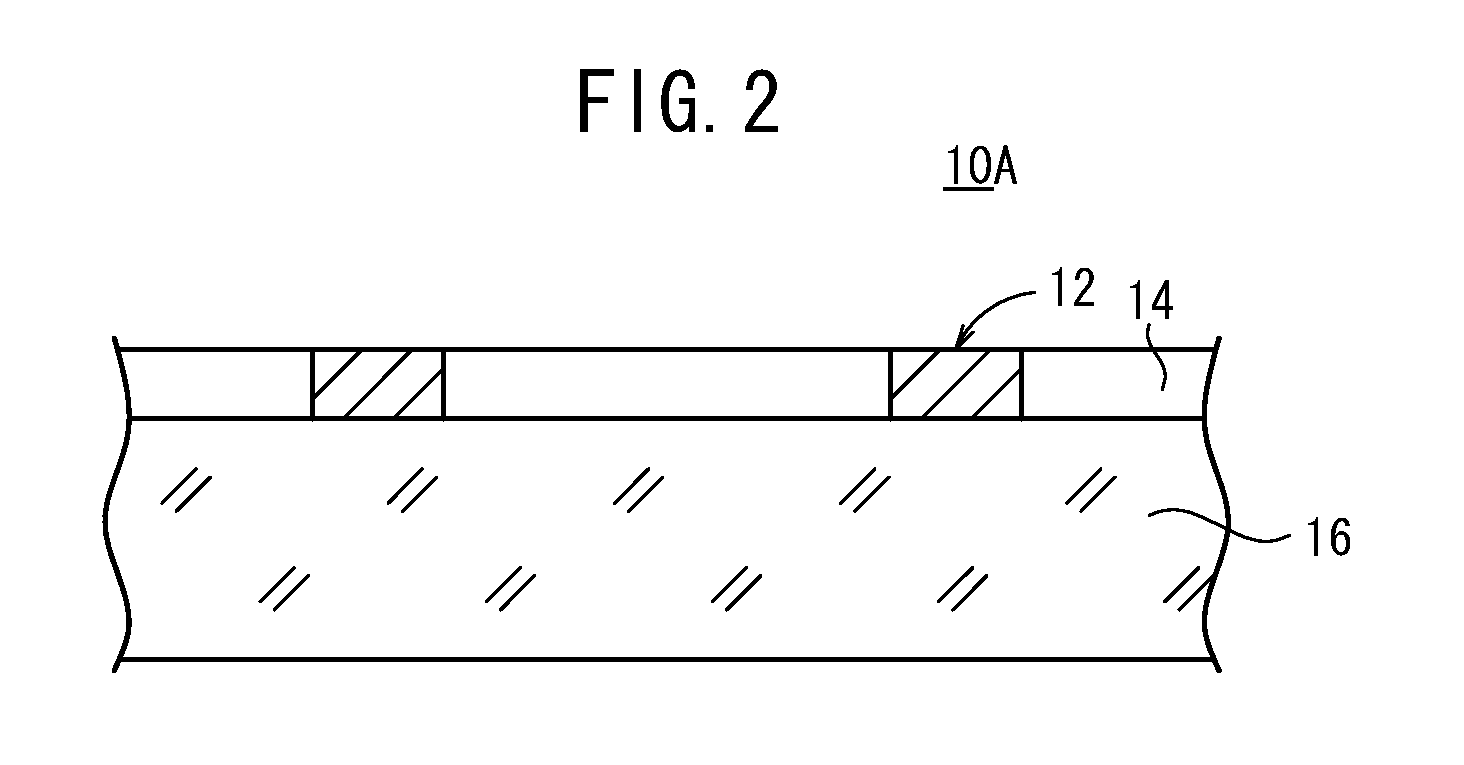Conductive film and transparent heating element
- Summary
- Abstract
- Description
- Claims
- Application Information
AI Technical Summary
Benefits of technology
Problems solved by technology
Method used
Image
Examples
examples
[0220]The present invention will be described more specifically below with reference to Examples 1 and 2. Materials, amounts, ratios, treatment contents, treatment procedures, and the like, used in Examples 1 and 2, may be appropriately changed without departing from the scope of the present invention. The following specific examples are therefore to be considered in all respects as illustrative and not restrictive.
(Photosensitive Silver Halide Material: Examples 1 and 2)
[0221]An emulsion containing an aqueous medium, a gelatin, and silver iodobromochloride particles was prepared. The amount of the gelatin was 10.0 g per 60 g of Ag, and the silver iodobromochloride particles had an I content of 0.2 moil, a Br content of 40 moil, and an average spherical equivalent diameter of 0.1 μm.
[0222]K3Rh2Br9 and K2IrCl6 were added to the emulsion at a concentration of 10-7 mol / mol-silver to dope the silver bromide particles with Rh and Ir ions. Na2PdCl4 was further added to the emulsion, and t...
PUM
 Login to View More
Login to View More Abstract
Description
Claims
Application Information
 Login to View More
Login to View More - R&D
- Intellectual Property
- Life Sciences
- Materials
- Tech Scout
- Unparalleled Data Quality
- Higher Quality Content
- 60% Fewer Hallucinations
Browse by: Latest US Patents, China's latest patents, Technical Efficacy Thesaurus, Application Domain, Technology Topic, Popular Technical Reports.
© 2025 PatSnap. All rights reserved.Legal|Privacy policy|Modern Slavery Act Transparency Statement|Sitemap|About US| Contact US: help@patsnap.com



